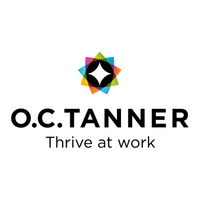How to recognise employees this Christmas to help build connection and purpose

Employee recognition has a positive impact on workplace culture in the best of times, and that effect is multiplied during challenging times. Figures from our 2021 Global Culture Report found that at the height of the pandemic, employees that were recognised in the prior seven days were 103% more likely to feel supported by the organisation and 59% more likely to trust their leader. But when formal employee recognition wasn’t present, employees were 23% less likely to feel supported by their organisation and were twice as fearful of Covid-19.
Recognition is more important than ever in times of crisis. As we come to the end of what can only be described as a ‘challenging year’, why not use this juncture to sincerely thank employees and help build connection to purpose? It doesn’t require a big budget and the results can be really impactful. Here’s how you can make a difference:
Move beyond transactional recognition
Right now, employees are craving connection and human interaction. Activities like handing out gift cards, bringing in treats for the whole department, or going out to lunch as a team are not only impossible right now, but don’t always adequately demonstrate that leaders value the unique role and contribution of each individual employee.
Recognition needs to be a thoughtful, sincere and consistent part of the employee experience rather than transactional, especially when there is uncertainty in the workplace. And it needn’t be an expensive activity, it’s about managers and leaders being aware that this genuine approach is what employees really value.
Create meaningful and personalised recognition moments
Our 2021 Global Culture Report shows that nearly three quarters (70%) of employees say recognition is most meaningful to them when it is personalised. However, that doesn’t always happen, as only half of employees believe their leader understands how they want to be recognised, and a third of employees say the way they receive recognition makes them feel uncomfortable. The key here is to make the recognition meaningful and personal to the recipient. Getting the right person the right gift, shows you have listened to them and you really know them. This will have a far greater return than a more expensive (yet generic) gift!
To celebrate achievements or above-and-beyond effort, it’s important to recognise employees in front of their teams. Leaders need to speak in detail about how their work has impacted their team and the organisation. After all, employees want their stories to be told and want their peers and leaders to see what they’ve accomplished. The effect of recognition is amplified greatly when it’s shared and public, especially when people have been separated physically. By sharing stories of what employees have done and inviting peers to comment, an uptick in engagement will be felt across the board.
Leveraging technology can help to spotlight people both internally and externally, but where this is not possible, a handwritten note can arguably be just, if not more powerful. Taking the time to personally thank employees can go a long way and costs little time and effort.
Make recognition a renewed priority
Recognition can be forgotten during times of crisis. But as we come out of crisis, it’s important to move appreciation up the list and remember that saying “thank you” doesn’t need to come off the bottom line.
Showing appreciation must be moved to the top of the agenda and recognition moments need to be built into calls, one-to-ones and daily huddles. Senior leaders must model recognition, managers need to give it when they see great work happening, and regular email reminders encouraging people to recognise one another will ensure it’s not easily forgotten.
Build recognition into everyday culture
Ultimately, recognition must become part of the everyday culture. It doesn’t need to cost a lot or be complex. Simple, meaningful expressions of gratitude and moments of connection can help people to thrive, even in the most uncertain times. Why not make a start this Christmas time?
The author is Dan Phipps, culture and engagement strategist from O.C. Tanner Europe.
This article is provided by O.C. Tanner Europe.
Supplied by REBA Associate Member, O. C. Tanner
Giving teams the integrated tools they need when, where and how they need them.







